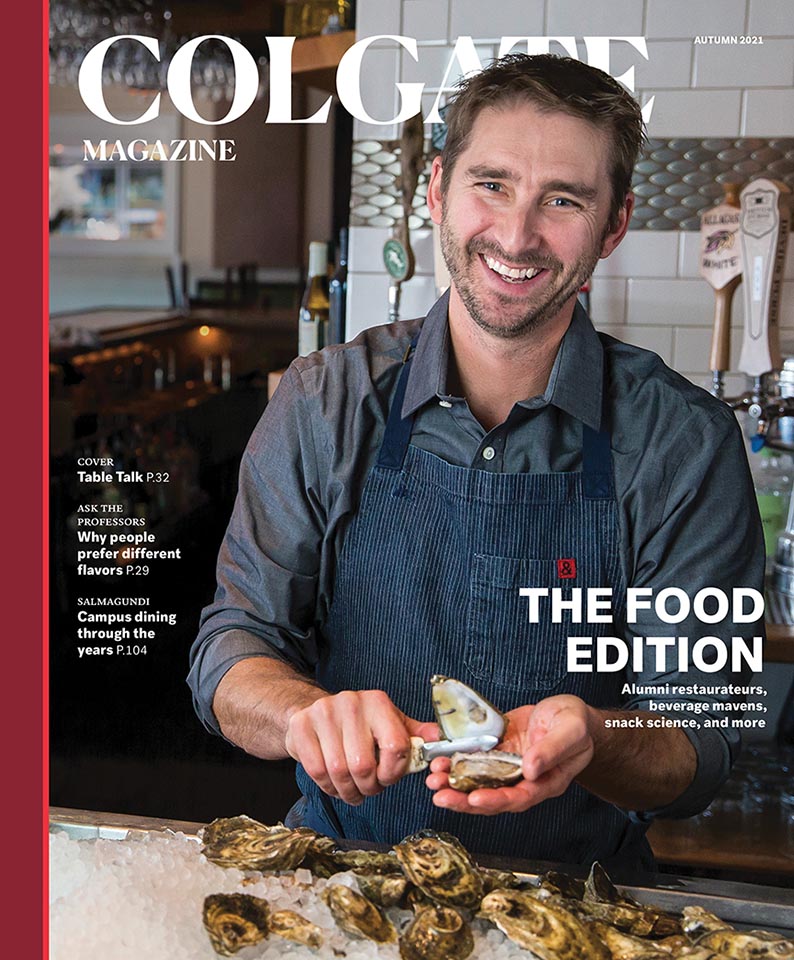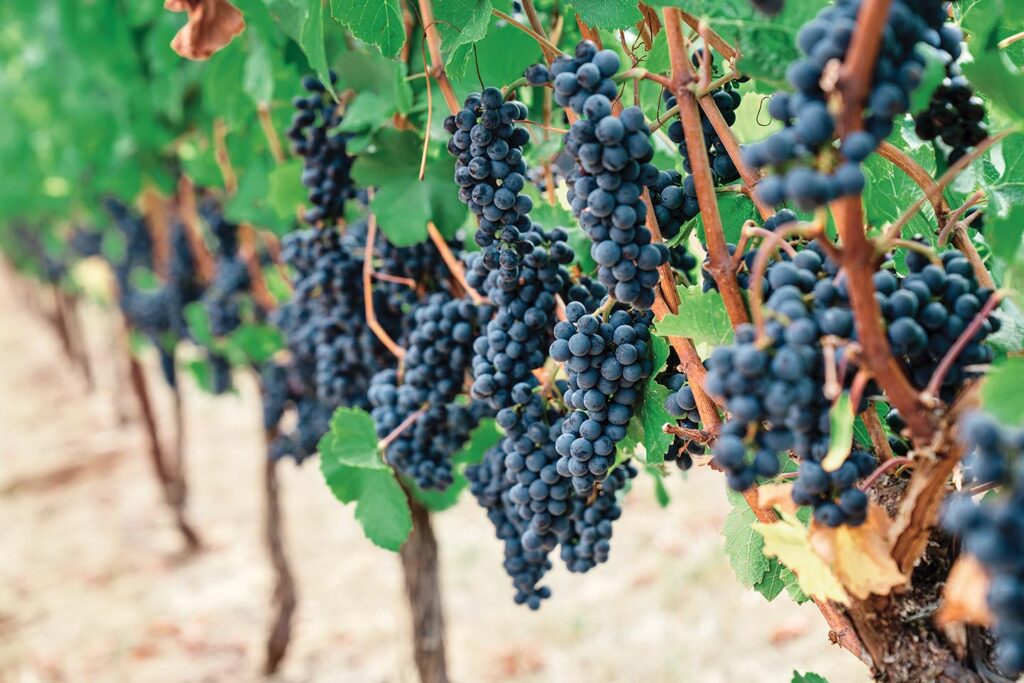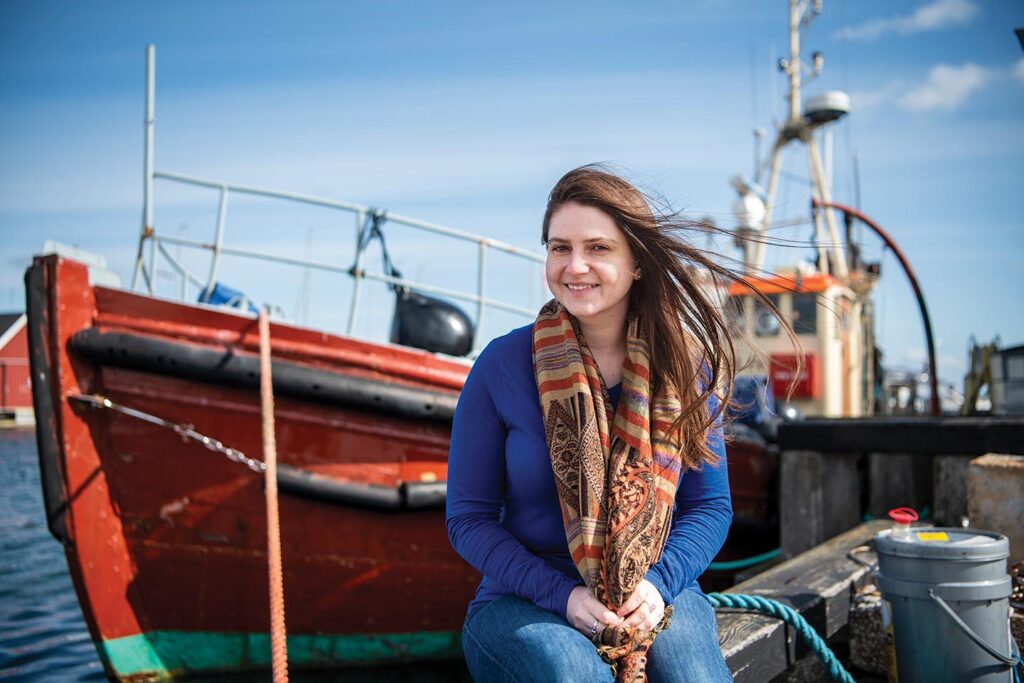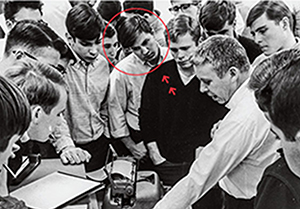Cover Note
As a Cape Cod resident, I’m looking forward to learning more and making a visit [to a restaurant owned by Mac Hay ’96]!
Corinne Costanzo ’84 Wickel
Gastronomic Delight
Congratulations. The food issue is a prize winner.
Alan Brown ’67

The autumn 2021 issue of the magazine is terrific from cover to cover and in every detail — the best I can remember, and I’ve been reading it assiduously in its various incarnations for decades. Wonderfully imaginative and superbly executed.
Also, I happen to love the Hi-Life [owned by Earl Geer ’80, “Table Talk”], which is in my son and daughter-in-law’s Upper West Side neighborhood. My wife and I came upon it last year, unaware of — but delighted by — the Colgate connection. The perfect Colgate spot!
The magazine’s marked improvement in the last few years is one — but only one — of many signs of striking institutional momentum. I couldn’t be more proud of or delighted by that. Go, ’gate!
Howard Fineman ’70
Really enjoyed the alum foodie feature (“Table Talk,” autumn 2021), having worked in and around the F&B sector for decades and also having been actively involved with some food specials on PBS as well as creating and staging a lot of high-end, artisanal food events. Thanks for the really fun read!
Ken Zuckerman ’80
Food Fight!
In response to the request for your dining hall memories (autumn 2021):
I came to Colgate in August 1973 to begin my freshman year. I lived in East Hall the last year it was an all-male dorm. We were known collectively as ‘Eastie Beasties.’ Except for one mass streaking event on one brisk fall night, the Beasties were normal Colgate freshmen. Occasionally, there was goalie practice in the halls. There was one pay telephone per floor, which people periodically answered ‘Yankee Stadium! Second Base!’ or some sort. One student hacked the fourth-floor phone to enable free long-distance calls for a short period of time. In other words, normal student life.
Then came philosophy and religion. P&R was stressful. I was not alone. The collective experience of the class caused angst among the freshmen, especially at finals. In December 1973, the night before the P&R final exam, there was a foot of wet snow on the campus. Students were in their rooms or walking the halls, holding notebooks and muttering, cramming for P&R. The energy in the air was soon replaced by shouts and snowballs. A mass snowball fight broke out between East Hall and Andrews. I don’t recall if West Hall and Stillman were caught up in the action too. The snowball fight lasted well past midnight. Of course, it escalated. Andrews repelled an attack with a fire hose, and President Bartlett came down and yelled at everybody with a megaphone to stop and go to bed. The next day as we walked to the exam we noticed, with satisfaction, all of the snow was gone and peppered the dorm buildings.
How does any of this relate to the Student Union’s Hall of Presidents? Well, then spring 1974 came. It was a sunny day. We all took our final P&R exam. We were happy P&R was over. As students lined up for lunch, a whisper, unnoticed by adults, passed along the food line — ‘food fight.’ I think this piece of information affected our selection of food. I did not seek to participate. We sat down at our tables, glancing around the room. The salad bar divided the Hall of Presidents neatly into two equal sides. Tension mounted during lunch. I do not recall who he was, but he knows he did it. He walked to the salad bar table and yelled ‘food fight!’ and launched the first shot. I likely threw something. My friends and I dove under a small table as food splattered everywhere. (Mashed potatoes are effective.) The fight was over in a minute.
The aftermath: The adults noticed the food fight. All doors were shut. No one was going anywhere. The freshmen dean appeared. She was unhappy with this event. Students were given tools and pails of water to clean up the Hall of Presidents, which we did. We left satisfied.
Dwight Mengel ’77
As the last all-male class (1973), I have memories of being told in 1969 that we still needed to dress formally for Sunday dinners, including ties. We were also told that beanies were optional. While I remember scattered beanies at the start, the ties petered out even more quickly. I started out working in the hall staffing the food line under the stern authoritarian eye of Ms. K, who was responsible for the cafeteria-style pickup line that all 600 freshmen filtered through. For me, it was a great way to meet the rest of my classmates as they picked out their meals from the display tables. I don’t remember how the first food fight happened, but I do remember when someone threw the first salad bowl across the hall. Everyone in the hall was tossing something. Ms. K had no comment… As I rotated to washing dishes in the kitchen, I have fond memories of being trained on how to ladle the mashed potatoes into the exhaust fan above the back entrance that everyone left by when it was snowing outside, and, of course, collecting all the food trays that everyone took to slide back down the hill from the dorms for the next meal. Working the dining hall freshman year cured me of working on campus and I spent summers instead building up my gas money account in order to commute for true love in my upperclassman years.
Roger Wapner ’73
Virginia Vinos

What a delight to read “We’ll Drink To Them” (autumn 2021). While the West Coast and upstate New York are better known with regard to wine production, don’t forget about Virginia. Virginia is considered the birthplace of American wine, with a heritage stretching back to the 1600s. Since Thomas Jefferson famously tried, and failed, at growing grapes here, the Virginia wine industry has both grown and matured, with wines that compare favorably to the best of our West Coast and European colleagues. Colgate is well represented among the ranks of the 300 or so Virginia wineries, with two Virginia wineries recently founded by Colgate alums: Rutger de Vink ’92, RDV Vineyards, and David Foster ’01, Mountain
Run Winery.
David Foster ’01
Solving Seafood Supply Chain Issues

Christine [Hebert ’12], I applaud your work on behalf of small-scale aquaculturists who are struggling to survive against large industrial-scale competitors (“Sea Change,” summer 2021). We are facing a similar threat on Frenchman Bay in downeast Maine.
Paul Parshley ’72
Very proud of one of our environmental econ alumnae making big and important changes in the world economy.
Nicole Simpson, W. Bradford Wiley Professor of international economics; chair, Department of Economics
Erasing Stereotypes
What a delight. I’m so proud of my fellow Colgate alum Dick Weiss [’73] for taking on the difficult issues of race in the St. Louis area (“Writing in Color,” summer 2021).
Daniel Schramm ’75
Computer Science Success Stories

Imagine my surprise to find myself in the middle of your picture with Dr. Brackett (“Colgate and the Machine,” summer 2021). I believe it was taken in the Jan Plan of 1967. Dr. Brackett had been my freshman chemistry professor. At the end of my sophomore year I was ready for change, and ran into him. He was also looking for change and suggested I try the new Jan Plan in computers that he was starting. Although it was 1967, and I was by then an English major, I thought computers were going to change the world, and I needed to understand what they were about. The class was rather small, but Dr. Brackett made it challenging and fun. The IBM 1620 machine took up most of a separate room.
Computers proved good to me. A classmate, Van Parker ’69, and I wrote a CBT program to teach English grammar and received honors for the Jan Plan. I was launched into computer science! Dr. Brackett had forced us to think logically, plan ahead, become more efficient, and bridge the human/technology gap. The following two summers I got a job in NYC as a programmer with clearance to work on a variety of large capacity computers as a programmer and operator.
Back on campus, Dr. Brackett again made me a suggestion. Colgate was going to open the computer lab to students. Was I interested in becoming a nighttime operator and tutor? I jumped at the chance.
Looking at Colgate Magazine’s graph of computer majors, I noticed only 11 in 1998. I chuckled at our efforts more than 30 years before. Back then, most nights in the computer room a few students would come in, but many nights I didn’t even turn on more than the lights.
Later in life, I got my PhD in psychology, building on my Yin/Yang skills that I called ‘high tech and high touch.’ It all started with Dr. Brackett’s vision for how computers would change the world.
William S. Beery ’69
My memories are of having my eyes opened to this brand- new world that was previously very intimidating to me, based solely on my limited experience with punch card programming in high school. I came to Colgate interested in math and science, thinking pre-med. I knew intuitively that computer programming fluency was essential, regardless of my path. So I took Comp Sci 101, like a child taking his medicine. Turns out, it didn’t taste so bad. As a sophomore, I signed up for the two-semester intro sequence (for majors) taught by Dr. Brackett. Unsure of my major at that point, he kind of ‘recruited’ me into the department, which was nice because I had no other suitors. I have very fond memories of the collaborative spirit of my fellow majors (including Ed Felt ’81, a great teacher and calm presence, who tragically died on 9/11). We saw a lot of each other in the basement of the Coop. I loved the problem solving, creativity, and new areas of mathematics. Dr. Brackett helped me get my first ‘real world’ summer job at Pfizer in NYC.
For the last 10 years, I’ve been a trustee of the Brackett Refugee Education Fund, working with Tom and Liz’s entire family. Very inspiring people!
Mark Sommer ’82
In my senior year, I took an independent study semester with physics professor Charlie Holbrow. The school had recently acquired a DEC PDP-10 time sharing computer. One of the programs (OK, games) available was Lunar Lander, where you were given an initial altitude, velocity, gravitation constant, and fuel amount. You had to land by firing your retro rockets and slow to a safe speed at touchdown. Burn your fuel too early, you’d run out, free fall, and crash; wait too long and you couldn’t slow enough and again you’d crash.
After learning to play the game, my assignment was to figure out the formula to safely land using the least possible amount of fuel, then code this into a BASIC program. I got hooked and eventually landed in an IT career.
Jeff Swallen ’73
Sugar Rush
Great story (“Finding Her Sweet Spot,” summer 2021)! I am incredibly happy Erica [Pais ’17] was able to find something she loves and spread knowledge to others through a unique design.
Diana Dimas ’20
